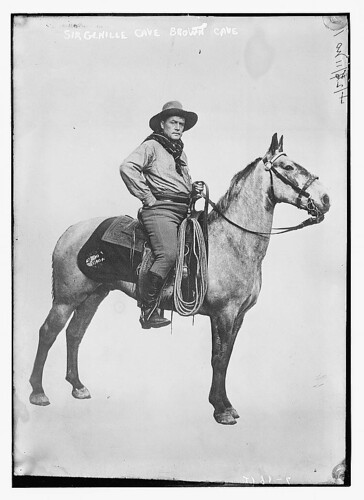For a variety of reasons, I use the Firefox browser. This morning, thanks to a post on LifeHacker, I discovered two plugins – one I’d categorize as nice-to-have; the other fills a major hole.
The nice-to-have plugin (thanks to a comment three links deep on LifeHacker – dumb luck on my part) is Tab Mix Plus. I think that tabbed browsing is the best thing since sliced beer; don’t know how I could browse without it. TMP gives you additional control over tabbing behavior and shows the load progress bar on the tab itself. You can click a link, pop over to another tab and see on the first tab when the page has completely loaded. Essential? Heck no. Nice? You betcha.
The killer plug-in is called How’d I Get Here. In 1945, Vannevar Bush wrote an article for the Atlantic monthly entilted “As We May Think“. In the article Bush proposed what he called a memex – a system that in some ways anticipated the web. A feature of the memex that the web didn’t originally have (though this is less the case today) are associative trails – the ability to assemble sequences of pages, with markup, and publish them.
The closest analogy with the modern Web browser would be to create a list of bookmarks pointing to articles relevant to a topic, and then to have some mechanism for automatically scrolling through the articles (for example, use Google to search for a keyword, obtain a list of matches, and then use “open in new tab” in your browser and visit each tab sequentially). Modern hypertext systems with word and phrase-level linking offer more sophistication in connecting relevant information, but until the rise of wiki and other social software models, modern hypertext systems have rarely followed Bush in providing individuals with the ability to create personal trails and share them with colleagues – or publish them widely. *
Something else that associative trails give you? The ability to backtrack. Way too frequently, I’ll find an interesting bit on the web, bookmark it in del.icio.us and move on. Days later, I’ll think of something I saw as I was clicking through to that bookmarked page – can I find the intermediate page? Hell, no. How’d I Get Here helps plug this hole. It keeps track of your clickstream; days later you can go to the bookmarked page, click the HIGH icon and walk backwards.
A couple caveats. I have no idea what HIGH will do if I find 2 different paths to the same page. I’d guess it would use the most recent backwards path, but I haven’t tested it (yet). If you’re paranoid, having this data on your machine may give you the willies. If it does, I’d suggest you are not paranoid enough. I’ve read persuasive arguments that true secrecy/paranoia involves measures like running all software from CD (so that when you turn the PC off everything goes away), always using open wireless access points, never using the same access point repeatedly, never being physically near the AP (think across the street with an antenna), etc. If you really need this level of stealth, you don’t need my advice. If you just think you need it, you may also want to look at a nice tinfoil hat *wink*.
Update – I found the post I was referencing above re: paranoia – it’s here. An example:
You need a false flag connection to the Internet. In other words, access the Internet via someone else’s open wireless router, preferably from great distance. Lots of organizations, businesses and individuals provide free, wireless Internet access; on purpose, believe it or not. Ideally, you would use a cantenna or a high performance parabolic antenna to authoritatively distance yourself from any surveillance cameras that are likely saturating your local coffee shop or other business that provides free Internet access. Hitting the base station from hundreds of meters away would be nice.
If you were to carry the paranoia to an extreme level, you would assume that They would show up at your access point and use direction finding equipment to spot your physical location. “Tinfoil!†you say? Keychain WiFi access point finders have had crude DF capabilities for years. Then you have civilian grade WiFi network engineering stuff like the Yellow Jacket. Direction finding is as old as the hills and trivial to do. If you do happen to attract the wrong kind of attention on an anonymous base station, pinpointing your location would be a simple matter.
Solution? If you are playing this game as if your life is on the line, don’t use the same open base station twice. Hey, this post is going out to those of you who send me the paranoid emails. You wanted to know, I’m telling you! I mean, it would suck to look toward your friendly anonymous WiFi provider with a pair of binoculars and see a guy in a suit looking back at you. Hint: if you see a van with several antennas arranged in some geometric pattern on the roof, that would not be a positive development. But that was 1980s era technology, the last time I dabbled with DF gear with a buddy of mine.










